Events
Sep 16, 11 PM - Oct 18, 11 PM
Join us on a learning journey combining AI, apps and cloud-scale data to build unique solutions.
Learn moreThis browser is no longer supported.
Upgrade to Microsoft Edge to take advantage of the latest features, security updates, and technical support.
With Visual Studio, you can connect any of the following to Azure SignalR service by using the Connected Services feature:
The connected service functionality adds all the needed references and connection code to your project, and modifies your configuration files appropriately.
Open your project in Visual Studio.
In Solution Explorer, right-click the Connected Services node, and, from the context menu, select Add Connected Service.
If you don't see the Connected Services node, choose Project > Connected Services > Add.
In the Connected Services tab, select the + icon for Service Dependencies.
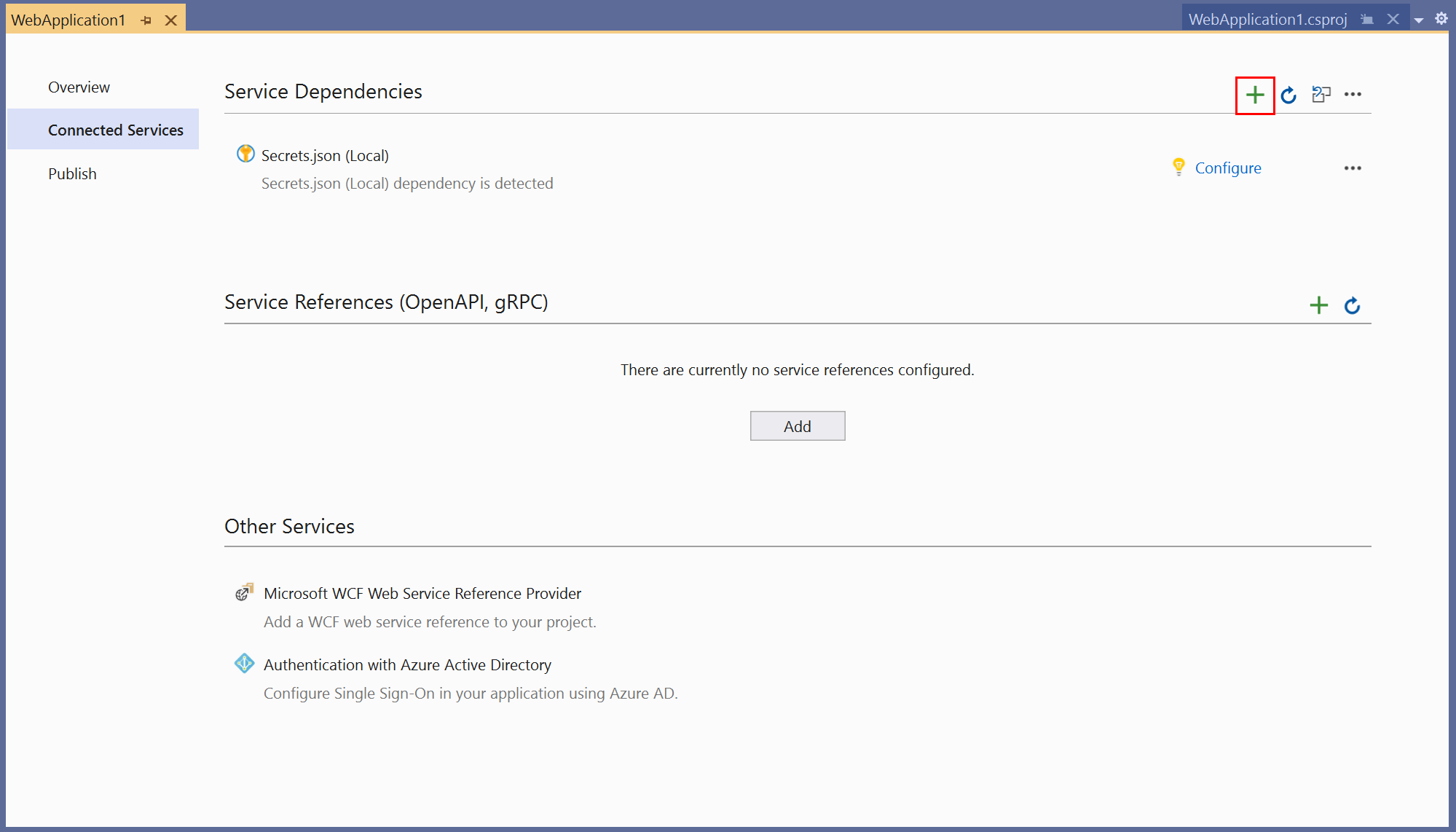
In the Add Dependency page, select Azure SignalR Service.
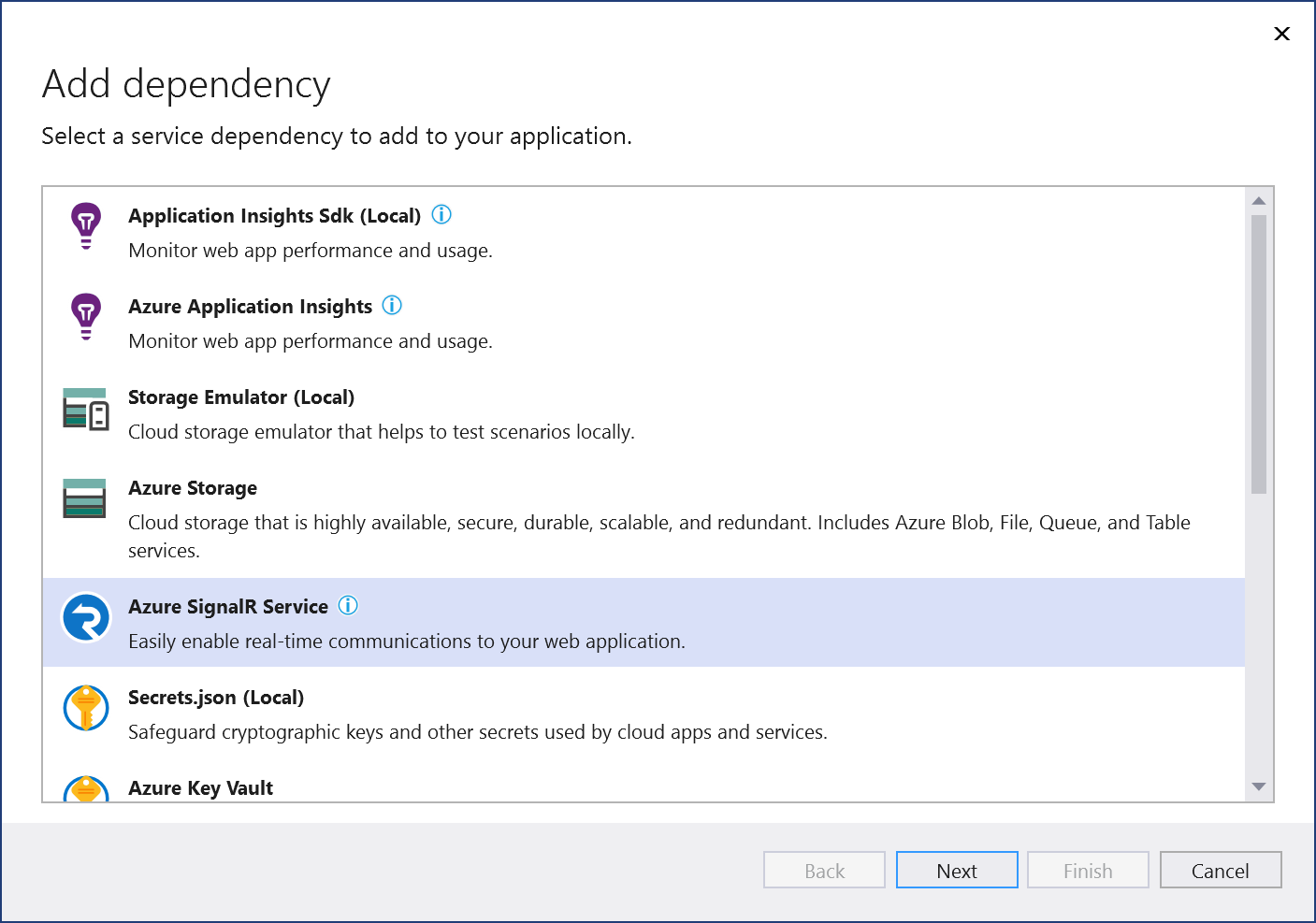
If you aren't signed in already, sign in to your Azure account. If you don't have an Azure account, you can sign up for a free trial.
In the Configure Azure SignalR screen, select an existing Azure SignalR component, and select Next.
If you need to create a new component, go to the next step. Otherwise, skip to step 7.
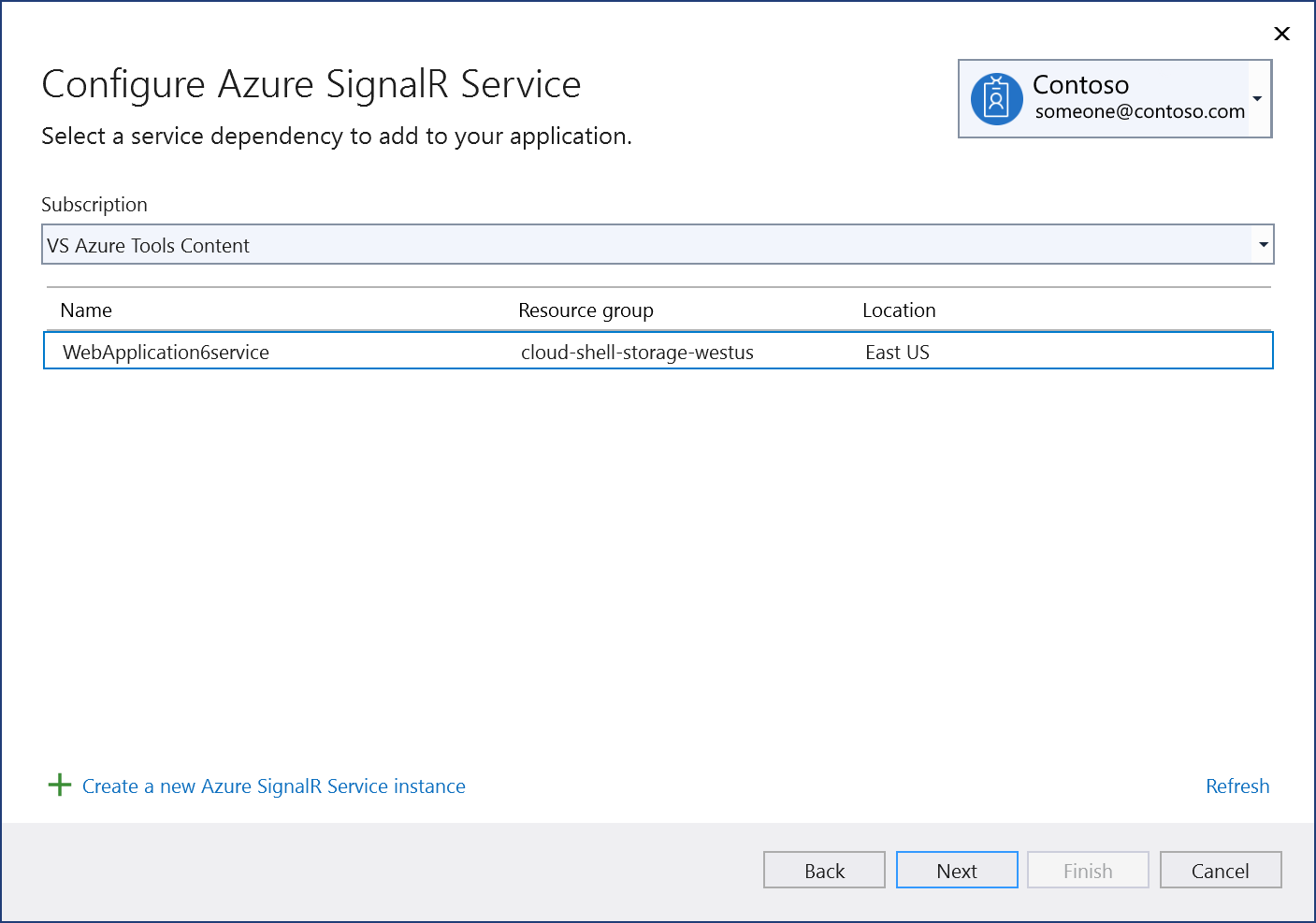
To create an Azure SignalR service instance:
Select Create a new Azure SignalR Service instance at the bottom of the screen.
Fill out the Azure SignalR Service: Create new screen, and select Create.
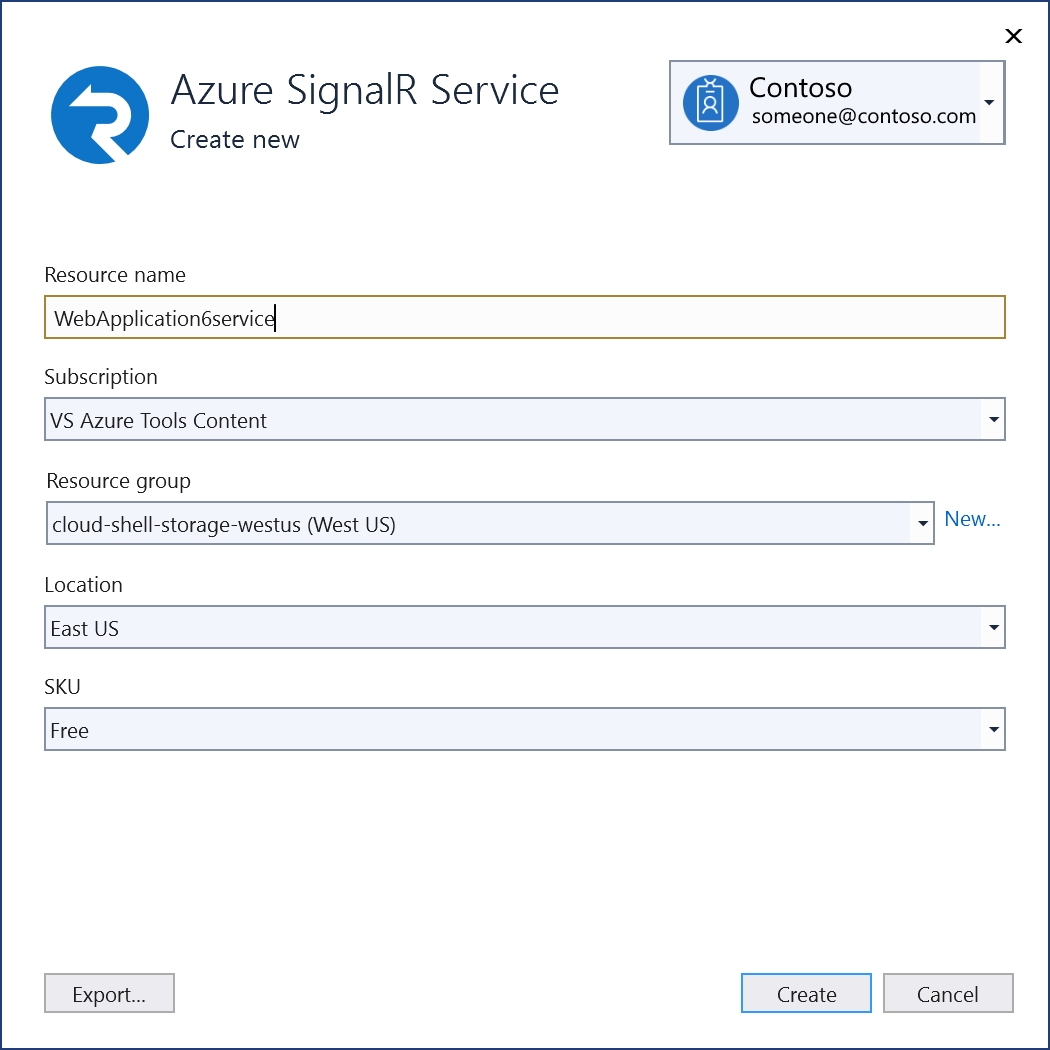
When the Configure Azure SignalR Service screen is displayed, the new instance appears in the list. Select the new instance in the list, and select Next.
Enter a connection string name, or choose the default, and choose whether you want the connection string stored in a local secrets file, or in Azure Key Vault.
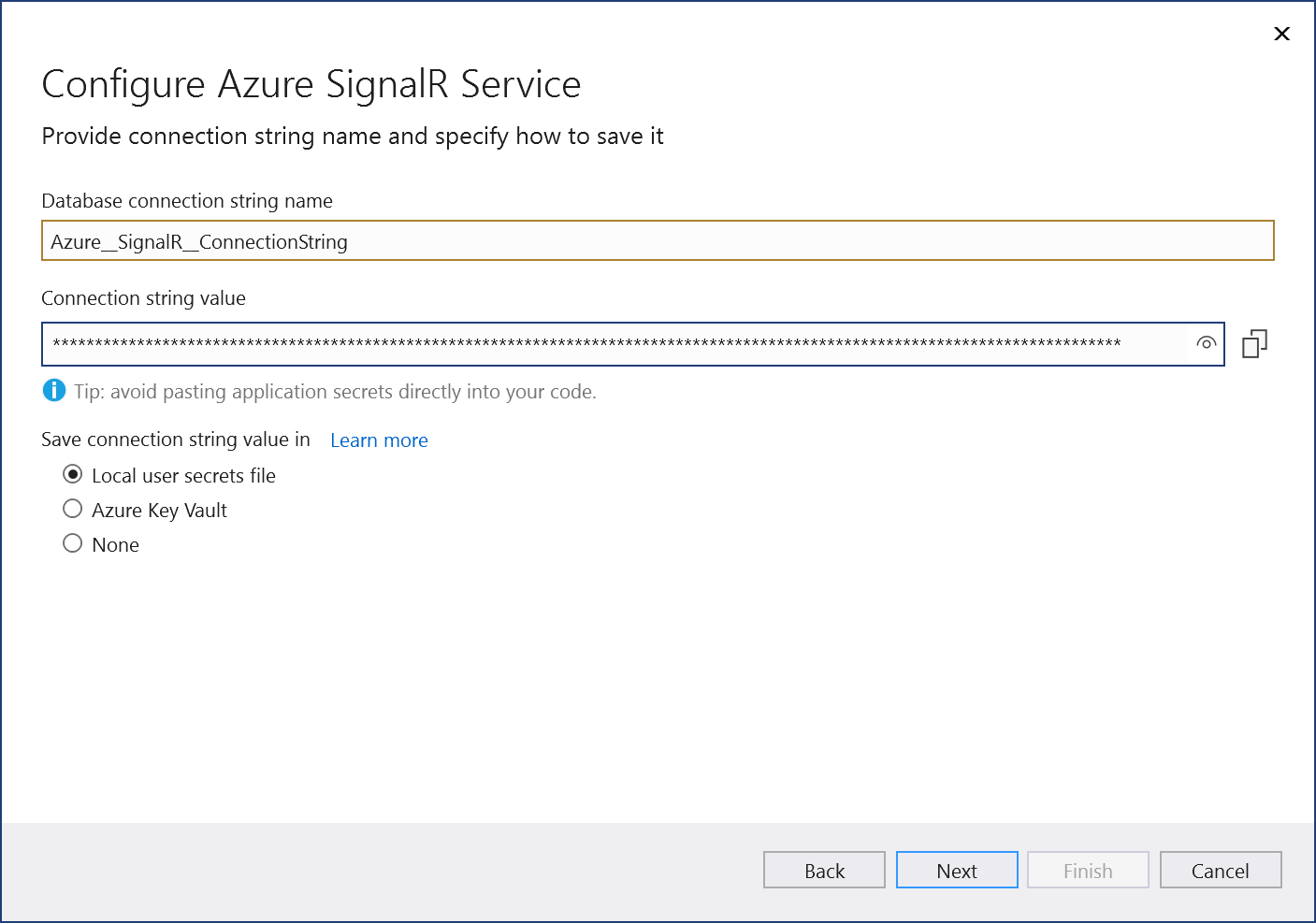
The Summary of changes screen shows all the modifications that will be made to your project if you complete the process. If the changes look OK, choose Finish.
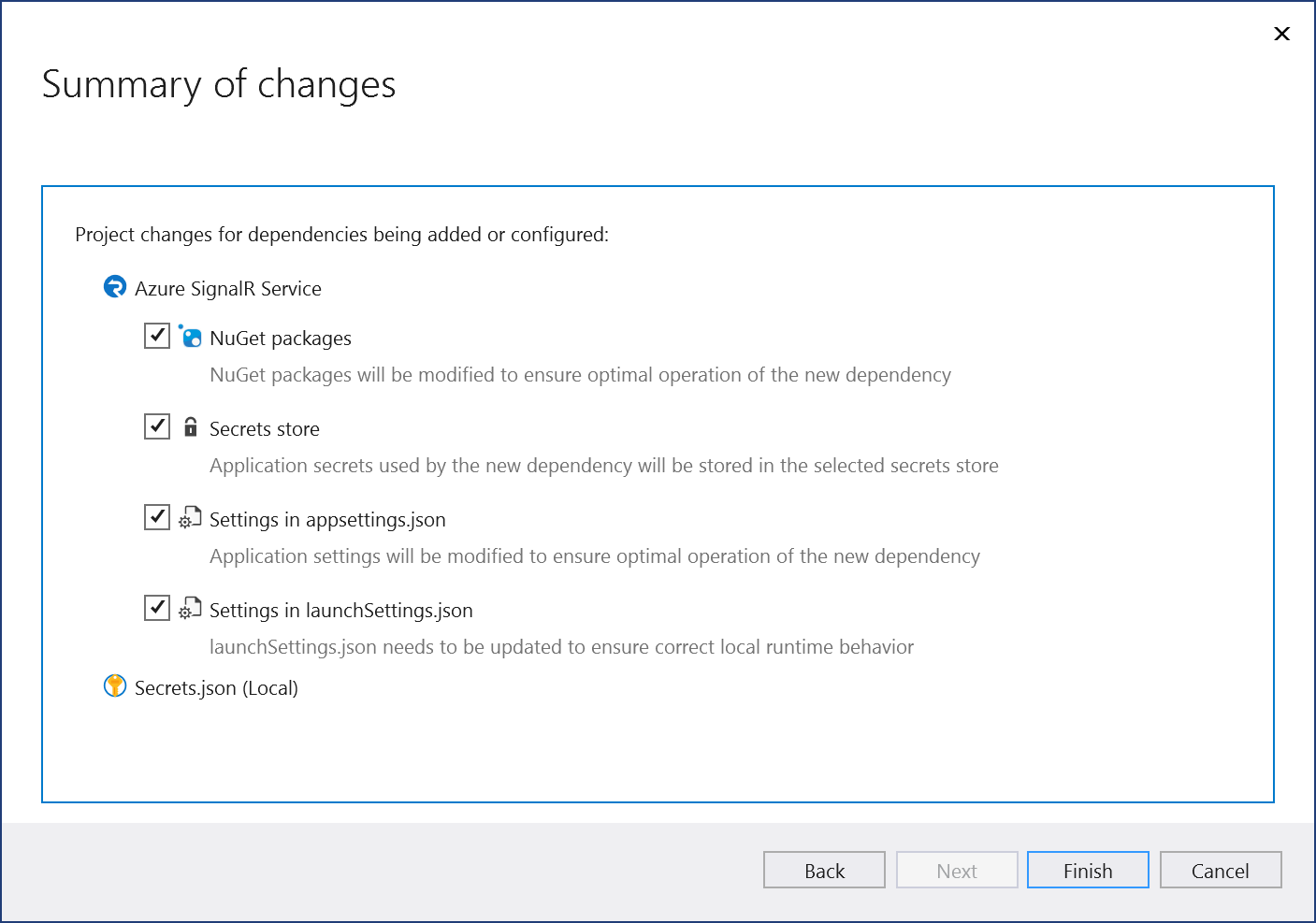
The connection appears under the Service Dependencies section of the Connected Services tab.

Note
For .NET Framework projects, Connected Services UI is slightly different. To see the differences, compare to the Visual Studio 2019 version of this page.
Open your project in Visual Studio.
In Solution Explorer, right-click the Connected Services node, and, from the context menu, select Add to open the menu of available services.

If you don't see the Connected Services node, choose Project > Connected Services > Add.
Choose Azure SignalR Service. The Connect to dependency page appears.
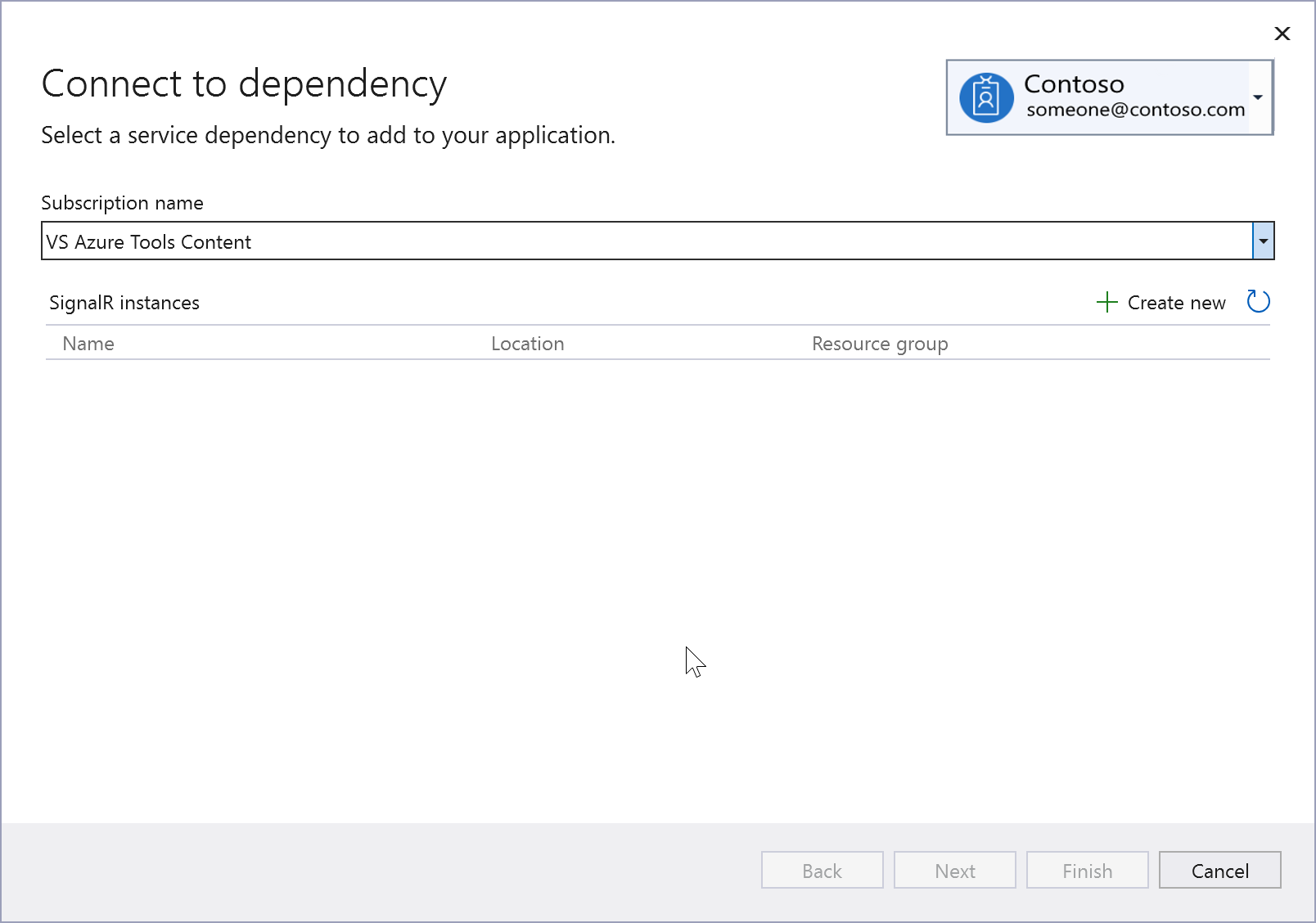
If you aren't signed in already, sign in to your Azure account. If you don't have an Azure account, you can sign up for a free trial.
Select an existing Azure SignalR component, and select Next.
If you need to create a new component, go to the next step. Otherwise, skip to step 7.

To create an Azure SignalR service instance:
Select Create new at the middle right of the screen.
Fill out the Azure SignalR Service: Create new screen, and select Create.

When the Configure Azure SignalR Service screen is displayed, the new instance appears in the list. Select the new instance in the list, and select Next.
Enter a connection string name, or choose the default, and choose whether you want the connection string stored in a local secrets file, or in Azure Key Vault.

The Summary of changes screen shows all the modifications that will be made to your project if you complete the process. If the changes look OK, choose Finish.

In Solution Explorer, double-click on the Connected Services node to open the Connected Services tab. The connection appears under the Service Dependencies section:

If you click on the three dots next to the dependency you added, you can see various options such as Connect to reopen the wizard and change the connection. You can also click the three dots at the top right of the window to see options to start local dependencies, change settings, and more.
Continue by following the Azure SignalR quickstart. You can skip the initial setup, since you've already done that, and continue with the section Add Azure SignalR to the web app. The code you use varies depending on your version of ASP.NET Core, so you might have to modify the code in the tutorial to suit your project template if your ASP.NET Core version doesn't match the version used in the quickstart.
Events
Sep 16, 11 PM - Oct 18, 11 PM
Join us on a learning journey combining AI, apps and cloud-scale data to build unique solutions.
Learn moreTraining
Module
Enable real-time updates in a web application using Azure Functions and SignalR Service - Training
Change a JavaScript web app update mechanism from polling to real-time push-based architecture with SignalR Service, Azure Cosmos DB and Azure Functions. Use Vue.js and JavaScript to use SignalR using Visual Studio Code.
Certification
Microsoft Certified: Azure Developer Associate - Certifications
Build end-to-end solutions in Microsoft Azure to create Azure Functions, implement and manage web apps, develop solutions utilizing Azure storage, and more.